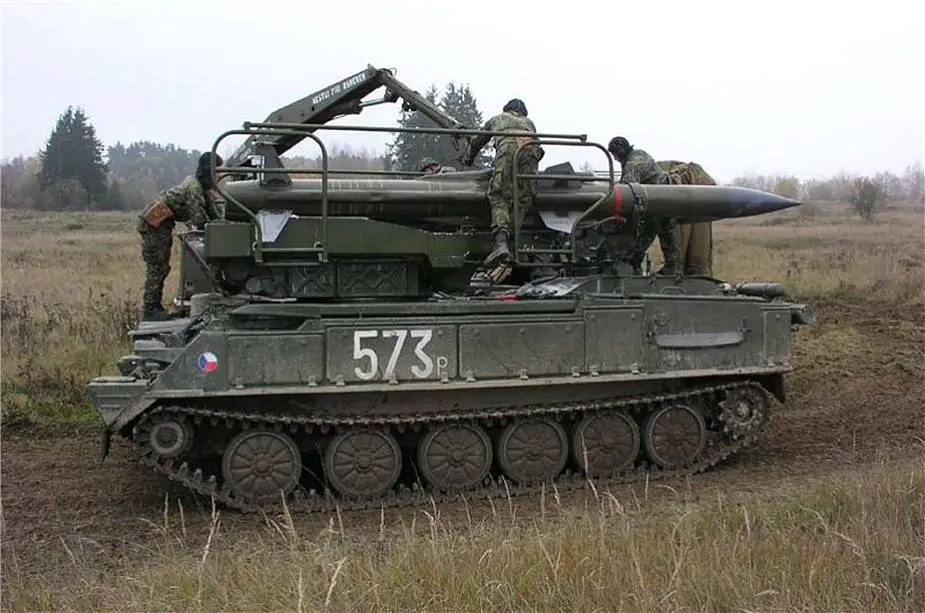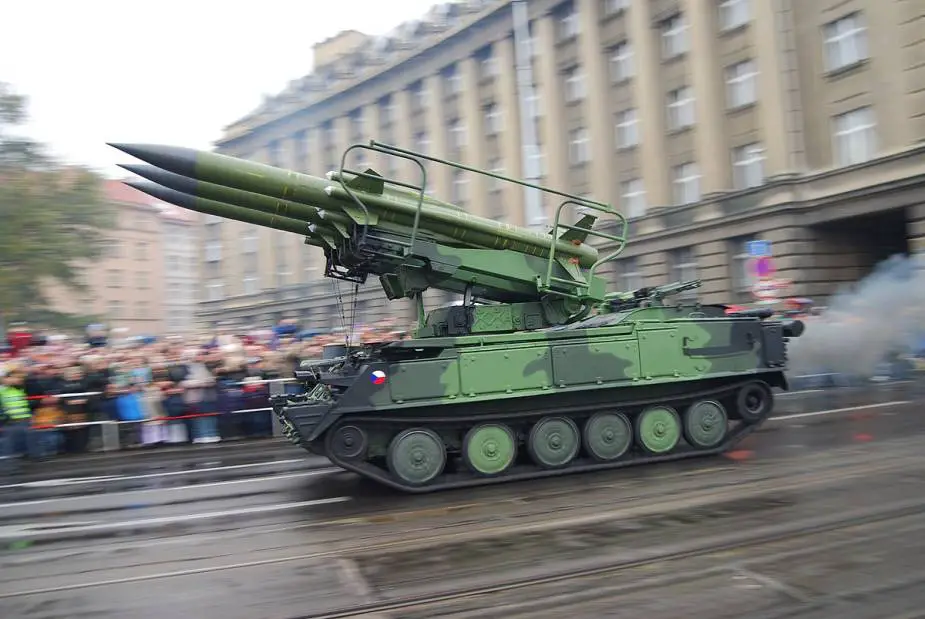Breaking news
Czech Republic bolsters Ukraine's Air Defense with donation of two 2K12 Kub air defense missile systems.
On Wednesday 10 May 2023, the President of the Czech Republic, Petr Pavel, announced that the Czech Republic would transfer two 2K12 Kub (NATO Code SA-6 Gainful) air defense missile systems and missiles to Ukraine. Due to the recent attacks by the Russian forces against military infrastructures and main cities on Ukrainian territory, air defense capabilities are a key element for the Ukrainian armed to counter aerial attacks by drones and missiles.
Follow Army Recognition on Google News at this link

Czech Army 2K12 Kub mobile air defense missile system. (Picture source Czech army)
In March 2023, Slovakia, a neighboring country of the Czech Republic, had already announced the donation of two 2K12 Kub air defense missile systems to Ukraine.
The Czech Republic took swift action following the invasion of Ukraine by Russian armed forces. The first batch of military aid, transported by train, reached Ukraine by February 27, 2022.
In April 2022, the Czech Republic further distinguished itself as the first nation to supply heavy military equipment, including 38 T-72 tanks from its army's deep storage. Following this, the Czech Republic once more took the lead by becoming the first country to dispatch combat aircraft, specifically, 4 modern Mil Mi-24V from the operational stock of the Czech Air Force.
By early February 2023, the Czech Republic had donated military equipment worth approximately €420 million (CZK 10 billion) sourced from the Czech Army inventory or procured from private Czech firms. On the commercial side, Czech arms companies had facilitated sales and deliveries amounting to around €1,27 billion (CZK 30 billion), either through direct purchases by Ukraine or via other countries supporting Ukraine. Additionally, sales and deliveries valued at roughly €1,6 billion (CZK 35 billion) had been authorized and were pending fulfillment.
In terms of air defense, the Czech Republic has already supplied Ukraine with 6 9K35 Strela-10M, and MR2 Viktor 4x4 23mm air defense vehicles made by Excalibur Army, paid by the Netherlands as well as 160 9K32 Strela-2 MANPADS coming from Czech Army inventory.

The 2K12 Kub launcher itself, known as a Transporter Erector Launcher (TEL), typically carries three missiles. (Picture Wikimedia)
The 2K12 "Kub" (also known as SA-6 Gainful by NATO) is a sophisticated air defense system that was first introduced by the Soviet Union during the 1960s. It was designed to protect ground forces from air attack, particularly at low to medium altitudes, serving as a shield against enemy aircraft and helicopters.
The heart of the 2K12 system is its radar guidance infrastructure. This includes a target acquisition radar, often a P-40 "Long Track" mobile radar to detect incoming threats, and a fire control radar, the 1S91 "Straight Flush" radar system that tracks the target and the missile simultaneously. The latter is an integrated unit with both radar and optical tracking options, which provides some resilience against electronic countermeasures.
The 2K12 uses 3M9 missiles, which are semi-active radar homing missiles. This means that the missile homes in on reflections of the radar signal that the fire control radar is bouncing off the target. The 3M9 missiles are quite large, about 5.8 meters long, and are carried on a tracked transporter erector launcher, each of which typically carries three missiles.
The 2K12 Kub's performance characteristics demonstrate its effectiveness as a mid-range air defense system. It has a range of approximately 2-25 kilometers and can engage targets at altitudes from as low as 50 meters up to around 14 kilometers. However, the system can only engage one target at a time, which may limit its effectiveness in a large-scale or high-intensity conflict.
While the 2K12 is an older system and lacks the sophisticated technology of more recent air defense systems, it can still pose a significant threat, especially to low-flying aircraft or helicopters. It is also notable that many upgrades and variants have been developed over the years, both in the Soviet Union/Russia and in other countries, which may have different capabilities.
Despite its age, it remains a relevant part of the air defense infrastructure of several nations worldwide.






















